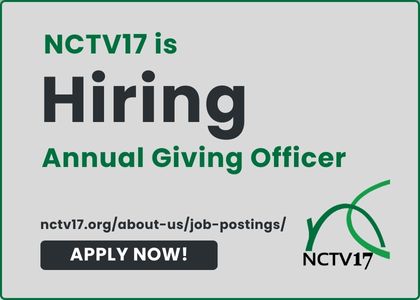How to start eating clean? It’s easy to get in a rut of processed menus. But shifting toward a diet of minimally-processed food can bring a big change in the way people look and feel.
What is clean eating?
- Choosing foods that have been minimally processed
- Eating a variety of foods
- Eating a balance of food groups including proteins, fruits, vegetables, whole grains, nuts and seeds, and dairy or dairy alternatives
- When possible, eating local, seasonal foods
- Choosing foods that are good for your body and the planet
Eating clean largely follows one simple rule: if it came from a plant, eat it. If it’s made in a plant, don’t.
Why should you eat clean?
People that eat a Western diet consisting of processed foods and meats with lots of added fat, sugar and refined grains suffer from increased rates of diabetes, cancer, heart disease and obesity.
Populations eating a wide range of traditional diets don’t suffer from high rates of these diseases. Diets can range from high fat (Inuits in Greenland who eat seal blubber) to high carbohydrate (South Americans who eat corn, beans and rice).
How do people feel when they eat clean?
- Energized! People who eat healthfully have an even energy level throughout the day. Food is fuel!
- Positive. Studies have shown that eating less processed foods reduces depression.
- Calm. Eating a healthy diet reduces irritability and anxiety.
- Full. Eating less sugar and more fiber helps keep you from getting “hangry.”
- Healthy. Clean eating reduces inflammation which improves your health in every aspect.
Consider this list of ingredients that are often added to processed foods:
- Partially hydrogenated fat (trans fat)
- Nitrites in cured meats
- Artificial food coloring (Blue 2, Green 3, Red 3, Yellow 5 and 6)
- Artificial sweeteners (acesulfame potassium, saccharin/Sweet N Low®, aspartame/Nutrasweet® and Equal®, sucralose/Splenda®
- Large amounts of refined sugars and salt
The only acceptable amount of trans fat that should be allowed in food is ZERO.
Fruit and veggies: the core of a healthy diet
Fruits and vegetables contain antioxidants — vitamins, minerals and other compounds in foods that may help protect against chronic disease.
Antioxidants work by protecting cells from damage from oxygen. In this way, antioxidants have anti-inflammatory properties.
How to get started eating clean
Meal planning is the key to avoiding the last-minute fast-food or processed dinner run. Schedule time to plan out meals for the week and make a grocery list. Shop and prep as much ahead of time as possible. This will also save time when it comes to whipping up a weeknight dinner or a quick, healthy breakfast.
Some other points to consider:
- Produce loses some of its nutritional value after it’s picked. It’s best to buy freshly harvested, local produce in the spring, fall and summer. This is also better for the environment.
- Consider joining a Community Supported Agriculture co-op.
- Frozen produce is flash frozen and retains most of its nutritional value.
- Hydroponic indoor gardening is becoming popular and is a great choice when buying produce in the winter.
When buying meat, poultry or dairy:
- Choose organic if it is available and the shopping budget allows.
- Choose antibiotic and growth hormone free if organic proteins are not in the budget or unavailable. The USDA requires documentation that these standards are adhered to.
- Choose 100 percent grass fed meats. Grass fed meat is healthier than meat from animals fed grain and raised in a confined space. Meat from grass fed animals has less saturated fat and more omega 3 fats. Only 100 percent grass fed meats are verified by the USDA.
- Watch out for “natural.” This term refers to what was not added to meats. It usually refers to processed meats. It means the food is free of artificial flavors, sweeteners, and preservatives. It does not refer to how the meat was raised.
- The terms “free range” or “cage free” eggs are not regulated.
If you have any questions about how to eat healthier, consult with your doctor or a dietitian to recommend an eating plan that works best for you.
630 Naperville Guest
Julie Sanfilippo, RD, LDN, is a lifestyle coach for the Diabetes Learning Center at Edward-Elmhurst Health. She also coordinates Edward-Elmhurst’s Jumpstart Your Health diabetes prevention program.
About Edward-Elmhurst Health
Edward Hospital and Linden Oaks Behavioral Health are part of NorthShore – Edward-Elmhurst Health, a fully integrated healthcare delivery system committed to providing access to quality, vibrant, community-connected care, serving an area of more than 4.2 million residents across six northeast Illinois counties. Our more than 25,000 team members and more than 6,000 physicians aim to deliver transformative patient experiences and expert care close to home across more than 300 ambulatory locations and eight acute care hospitals – Edward (Naperville), Elmhurst, Evanston, Glenbrook (Glenview), Highland Park, Northwest Community (Arlington Heights) Skokie and Swedish (Chicago) – all recognized as Magnet hospitals for nursing excellence. Located in Naperville, Linden Oaks Behavioral Health provides for the mental health needs of area residents. For more information, visit NorthShore.org and EEHealth.org.
More from 630 Naperville
Stay connected in the 630 by watching the best Naperville content featuring engaging people, local places, and great advice from experts.







